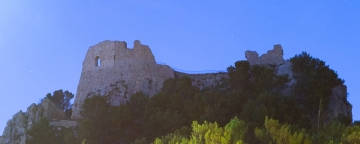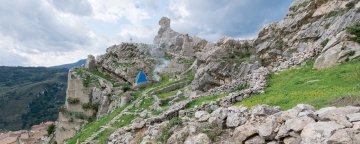Castello - Resuttano
Castello - Resuttano
Its ruins are visible 4 km away from the inhabited center of Resuttano, in the plain where the Imera river flows after its descend from the nearby hills. Consists of a tower surrounded by small and more recent buildings. The castle dates probably back to the earliest Norman period, although the name recalls to the previous Arabian era (Lo Vetere). Its name in fact probably comes from the Arabian RAHAL-SUPTANUM (fortified farm). Arabians have presumably built this farm as a rural building and military base, due to the strategic importance of the place, because it was "the gate from the river to the madonites villages". The most probable era of the birth of the rahal is half of the 10th Century. (Lo Vetere).
During the Norman era the castle, not particularly big, had a specific military role: the garrison safe shelter and an efficient transit station. From the 15th Century was property of the Ventimiglia of Geraci family. In the next Century, after a marriage between a Ventimiglia lady with Giovan Forte Romano, the castle and the fiefs became his property.
In 1625 Giuseppe di Napoli bought it for his son Gerolamo, who became the first king of Resuttano two years later. From 1600 the castle lost its military function and kept the farm functions. (Lo Vetere).
The Di Napoli family owned the castle until the 1919, when it was bought from the notary Antonino Manasia, on behalf of the Garibaldi Worker Society, to divide it into lots for the farmers. A lot of people boycotted it and Manasia also risked his life. That's why a good part of the fief became his own property, included the castle.
In December 1997 the Cultural Heritage Department, after a long procedure, obtained the expropriation of the walls and immediately intervened to reinforce and clean the structures and the environment.
The visitors of the castle can easily see a lot of nice small details, for example the beautiful windows that still keep elegant architectural elements: the Roman arch is prevalent, but there is also a window with a Renaissance style lintel, a stone spiral staircase that used to lead the upper floors, a room with vault, a small inner courtyard, on which wall there is the noble crest.








